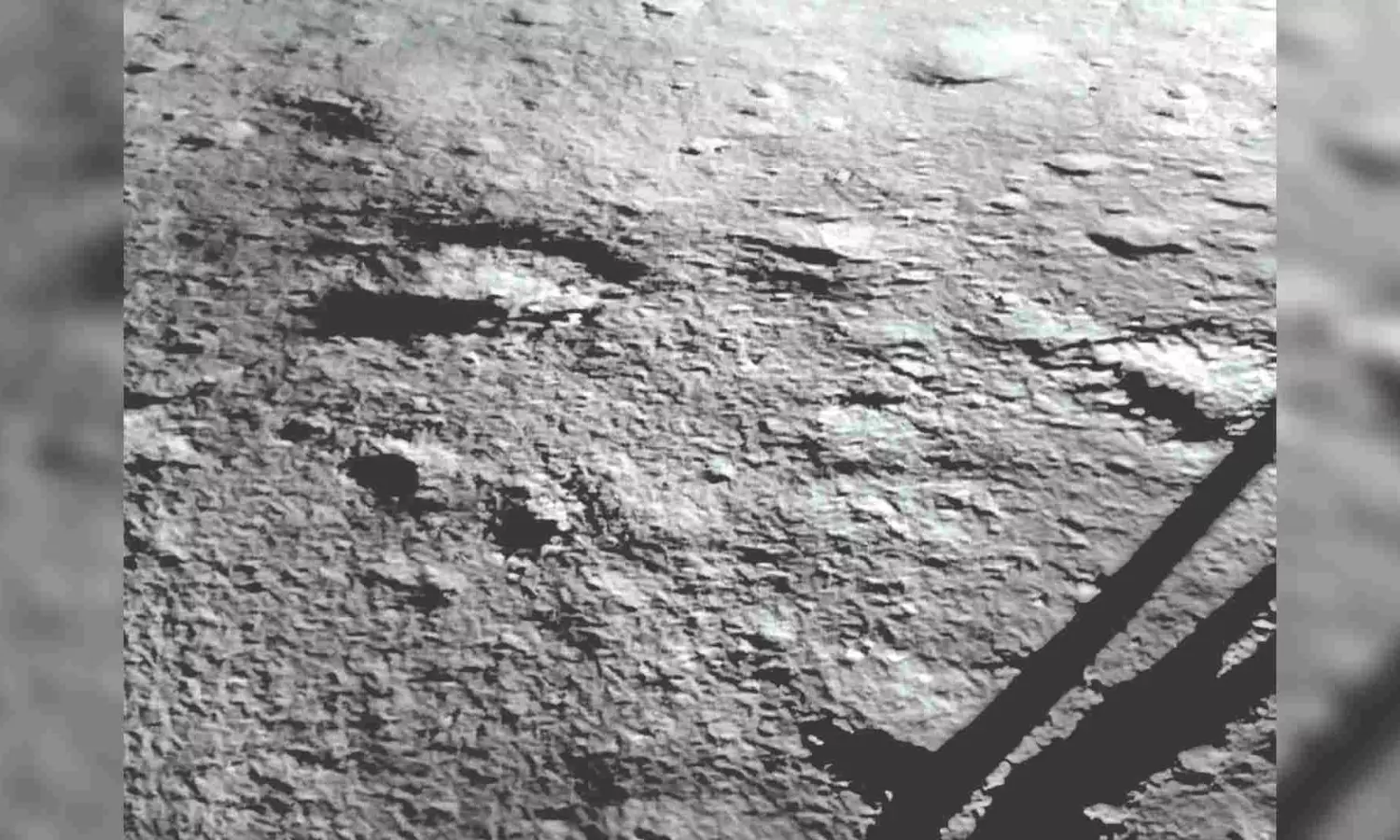Vikram completes task; Pragyan begins research
Laser Induced Breakdown Spectroscope (LIBS) will determine the elemental composition of the lunar soil and rocks around the Moon’s landing site. The deployment of Rover to carry out in-situ scientific experiments would scale new heights in lunar expeditions, ISRO said;

Lander camera captures a portion of Chandrayaan’s landing site
CHENNAI: Chandrayaan-3’s soft landing achieved, the rover module has now embarked on its 14-day assignment to carry out the tasks mandated by the ISRO scientists. Its duties include experiments to further under- stand the lunar surface.
After Vikram Lander ensured a safe touchdown, the most challenging part of the mission, it was the turn of rover ‘Pragyan’ which was in the belly of LM to come out and carry out a series of experiments on the surface of the Moon.
According to ISRO, the Lander and the Rover have five scientific payloads that have been placed in- side the Lander Module (LM). Rover’s Alpha Particle X-ray spectrometer (APXS) will be used to derive the chemical composition and infer mineralogical composition to further enhance the under- standing of the lunar surface.
Laser Induced Breakdown Spectroscope (LIBS) will determine the elemental composition of the lunar soil and rocks around the Moon’s landing site. The deployment of Rover to carry out in-situ scientific experiments would scale new heights in lunar expeditions, ISRO said.
The Mission life of both Lander and Rover is 1 Lunar Day each, which is equal to 14 Earth days. The Lander Payloads are RAMBHA-LP (Langmuir Probe), to measure the near-surface plasma (ions and electrons) density and its changes with time. ChaSTE Chandra’s Surface Thermo Physical Experiment will carry out the measurements of thermal properties of the lunar surface near the polar region.
The Instrument for Lunar Seismic Activity (ILSA) will measure the seismicity around the landing site and delineate the structure of the lunar crust and mantle.
Earlier, the lander at around 30 km altitude entered the powered braking phase, and began to use its four thruster engines by “retro firing” them to reach the surface of the moon, by gradually reducing the speed, ISRO officials said. This is to ensure the lander doesn’t crash, as the Moon’s gravity will also be in play.
On reaching an altitude of around 6.8 km, only two engines were used, shutting down the other two, aimed at giving the reverse thrust to the lander as it descends further, officials said.
At an altitude of about 150-100 metres, the lander, using its sensors and cameras, scanned the surface to check whether there are any obstacles and then start descending to make a soft-landing.

